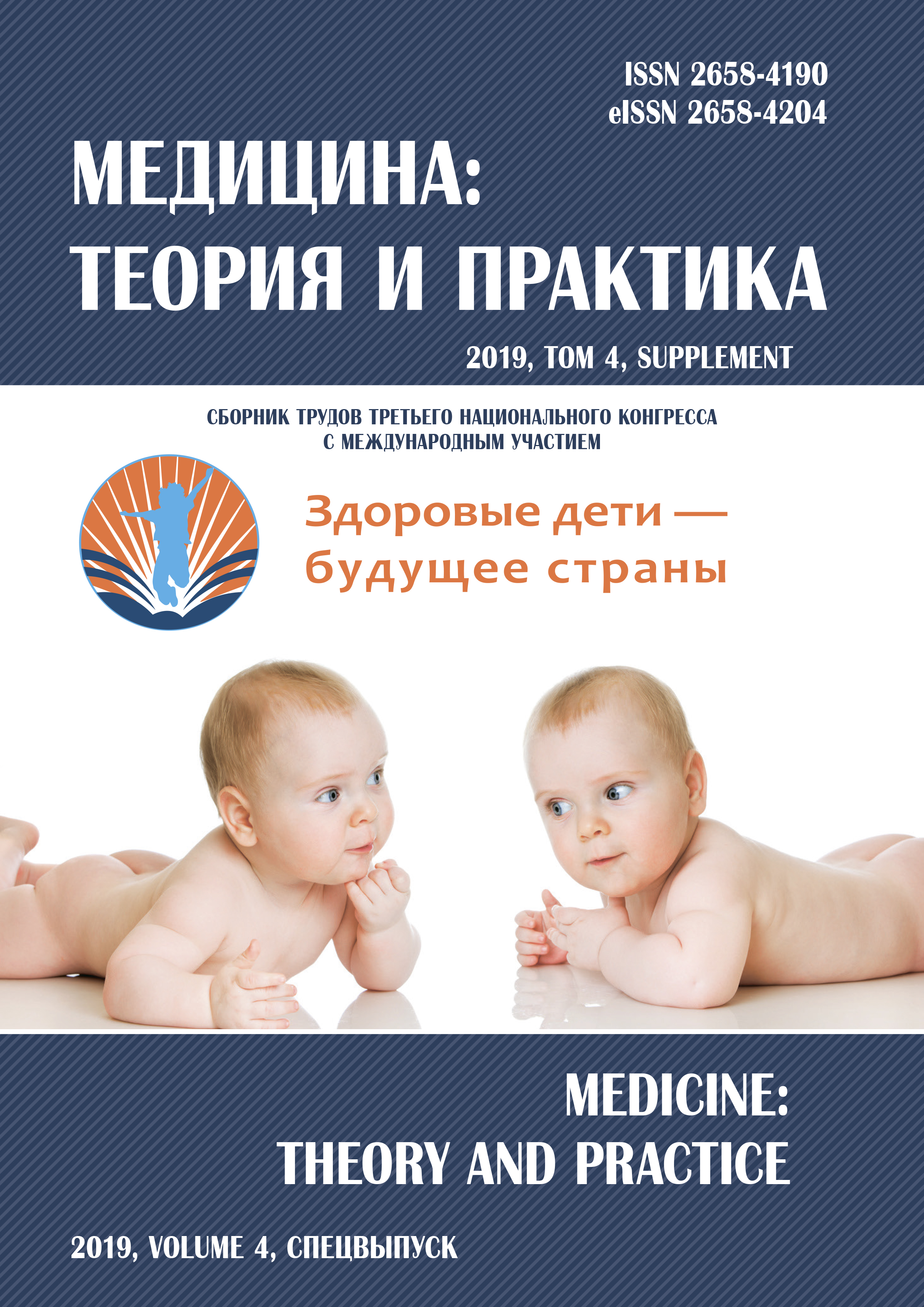ON THE ISSUE OF OPTIMIZING GLYCEMIC TARGET VALUES FOR GESTATIONAL DIABETES
Abstract
Aim. To estimate the influence of the metabolic control of gestational diabetes mellitus (GDM) on the perinatal period and anthropometric parameters of newborns. Materials and methods. 300 newborns were divided into 4 groups depending on the metabolic control of the mother: Gr 1 - fasting glycemia <5.1 mmol/l, 1 hour after meal <7.0 mmol/l (n = 50); Gr 2 - fasting glycemia <5.3 mmol/l, 1 hour after meal <7.8 mmol/l (n = 90); Gr 3 - fasting glycemia > 5.3 mmol/ l, 1 hour after meal >7.8 mmol/l (n=46); Gr 4 - control (n=114). The perinatal period was analyzed, anthropometric parameters were estimated according to INTERGROWTH-21st standarts. Results. The differences in the frequency of obstetric trauma (38.7% and 12.3%, respectively, p = 0.0000005) were found between the GDM group and the control group, the risk of which is associated with the weight of the newborn “above average” (p = 0.04). In Gr 2 and 3, the risk of birth of a child with weight (Gr1/Gr4 OR = 1.9, p = 0.1; Gr2/Gr4 OR = 2.6 and Gr3/Gr4 OR = 3.7, p <0.05), weight/length ratio (Gr1/Gr4 OR=0.9, p = 0.9; Gr2/Gr4 OR = 3.6 and Gr3/Gr4 OR = 4.9, p <0.05) and head circumference (Gr1/Gr4 OR=1.1, p = 0.6; Gr2/Gr4 OR = 2.5 and Gr3/Gr4 OR = 2.9, p <0.05) were “above average” as compared to Group 4. In the early neonatal period hypoglycemia was more common in GDM than in the control Group 4. The lowest risk was in Group 1 (Gr1/Gr4 OR = 4.8; Gr2/Gr4 OR = 6.7; Gr3/Gr4 OR = 7.9, p <0.05). Conclusions. The lowest frequency and risk of adverse consequences was obtained in Group 1, which corresponds the criteria of Russian Consensus.



